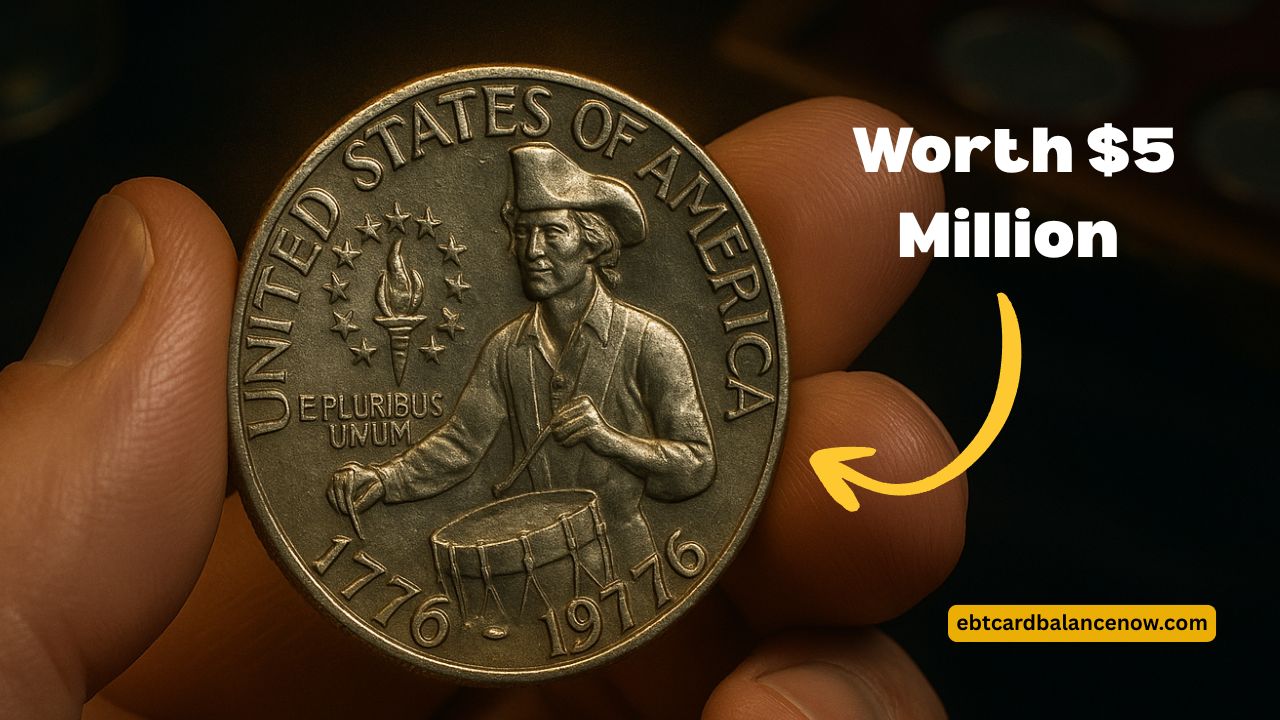The world of coin collecting is buzzing with excitement after claims that an unmarked Bicentennial Quarter has sold for an incredible $5 million.
While this number has shocked collectors everywhere, it has also inspired millions of people to check their pockets, wallets, and coin jars for one of these potential treasures.
The 1776–1976 Bicentennial Quarter, designed to celebrate America’s 200th birthday, is one of the most popular coins in circulation. Although billions were minted, rare variations, high-grade examples, and error coins can be worth significant amounts of money.
This article explores the details behind the $5 million story, the history of the Bicentennial Quarter, and how to identify the ones that could change your life.
The Story Behind the $5 Million Claim
The headline of a $5 million Bicentennial Quarter sale has spread like wildfire. Whether or not such a sale is realistic, what it shows is the extraordinary value rare coins can reach when they are unique, in pristine condition, or tied to an important historical moment.
Collectors are willing to pay huge premiums for coins that are one of a kind or nearly impossible to find.
The “unmarked” detail refers to no mint mark, which usually means the coin was minted in Philadelphia. While most of these are common, a very small number struck with unique characteristics or in exceptional condition can drive auction prices far beyond normal expectations.
History of the Bicentennial Quarter
The Bicentennial Quarter was released in 1975 and 1976 to celebrate the 200th anniversary of American independence. Key details include:
- Features the dual date 1776–1976 on the obverse.
- Reverse designed by Jack L. Ahr, showing a colonial drummer boy with a torch surrounded by 13 stars.
- Minted at Philadelphia (no mint mark), Denver (D), and San Francisco (S).
- San Francisco also struck special 40% silver versions for collectors.
While most were produced for circulation, the Mint also created proofs and silver collector sets, making certain variations more valuable today.
Why Some Bicentennial Quarters Are Valuable
Not every Bicentennial Quarter is worth more than face value. The ones that fetch hundreds or thousands of dollars are those with:
- High Grades (MS67, MS68, MS69) – Coins in perfect condition are extremely rare and highly sought after.
- Silver Composition – 40% silver Bicentennial Quarters from San Francisco are worth far more than standard clad issues.
- Errors & Varieties – Coins struck on the wrong planchet, double dies, or off-center strikes can bring huge premiums.
- No Mint Mark Rarities – While most “unmarked” coins are common, exceptional ones in high grade can spark collector bidding wars.
Examples of High-Value Sales
Over the years, several Bicentennial Quarters have brought impressive sums at auction. Here are some general ranges:
| Type of Bicentennial Quarter | Key Feature | Approximate Value |
|---|---|---|
| 1976-S Silver (Proof) | 40% silver, proof finish | $100 – $1,500+ depending on grade |
| 1976-S Silver (MS) | 40% silver, business strike | $500 – $10,000+ in high grade |
| 1976-D Clad (MS67+) | High-grade Denver issue | $1,000 – $5,000+ |
| 1976-P No Mint Mark (MS67+) | Philadelphia strike, top grade | $1,000 – $3,500+ |
| Major Mint Errors | Wrong planchet, off-center, double strikes | $2,000 – $15,000+ |
| “Legendary $5M Claim” | Reported “unmarked” rare coin | Unverified, but sparks interest |
How to Check Your Bicentennial Quarters
If you have a Bicentennial Quarter, here’s what to look for:
- Check for Silver – Silver coins will have a distinct edge compared to copper-nickel clad coins.
- Look at the Mint Mark – Coins from San Francisco (S) are more valuable, especially silver versions.
- Examine the Condition – Shiny, flawless, uncirculated coins with no scratches or wear are the most valuable.
- Search for Errors – Misaligned strikes, double lettering, or unusual thickness can point to minting mistakes.
- Consider Professional Grading – Sending your coin to PCGS or NGC can help certify its authenticity and maximize its market value.
Are $5 Million Quarters Real?
The idea of a single Bicentennial Quarter selling for $5 million is more of a collecting myth than a proven fact. However, coins like this can indeed be worth thousands—and in the right circumstances, one unique piece could potentially break records.
The lesson is not that every Bicentennial Quarter is worth millions, but that rare variations and top conditions can create life-changing finds.
The Bicentennial Quarter remains one of the most popular and collectible coins in U.S. history. While most are worth only 25 cents, the right coin in the right condition can bring hundreds, thousands, or even tens of thousands of dollars.
The $5 million claim may not have verified proof behind it, but it has succeeded in reminding people of the thrill of coin collecting. For many, the hunt is the reward—knowing that at any moment, a simple coin in your change could be worth far more than expected.
So the next time you handle your coins, take a closer look. You might not uncover $5 million, but you just might find a hidden treasure.
FAQs
How do I know if my Bicentennial Quarter is valuable?
Look for silver content, mint marks, flawless condition, or minting errors. Rare combinations of these traits increase value.
What’s the highest real price for a Bicentennial Quarter?
Some silver and error quarters have sold for over $10,000 in top condition. While $5 million is unverified, strong auction results are real.
Are Bicentennial Quarters still in circulation?
Yes, many still circulate today, though most are only worth face value. The rarest examples, however, are kept by collectors.

